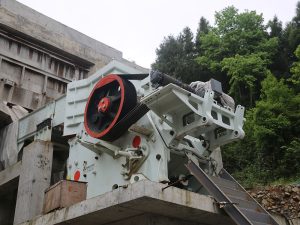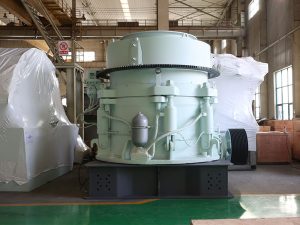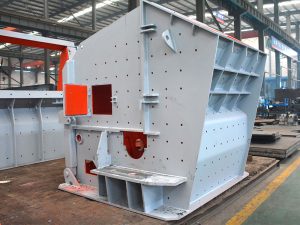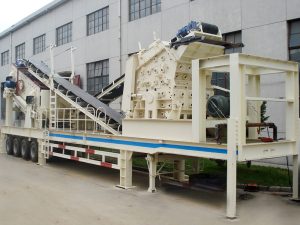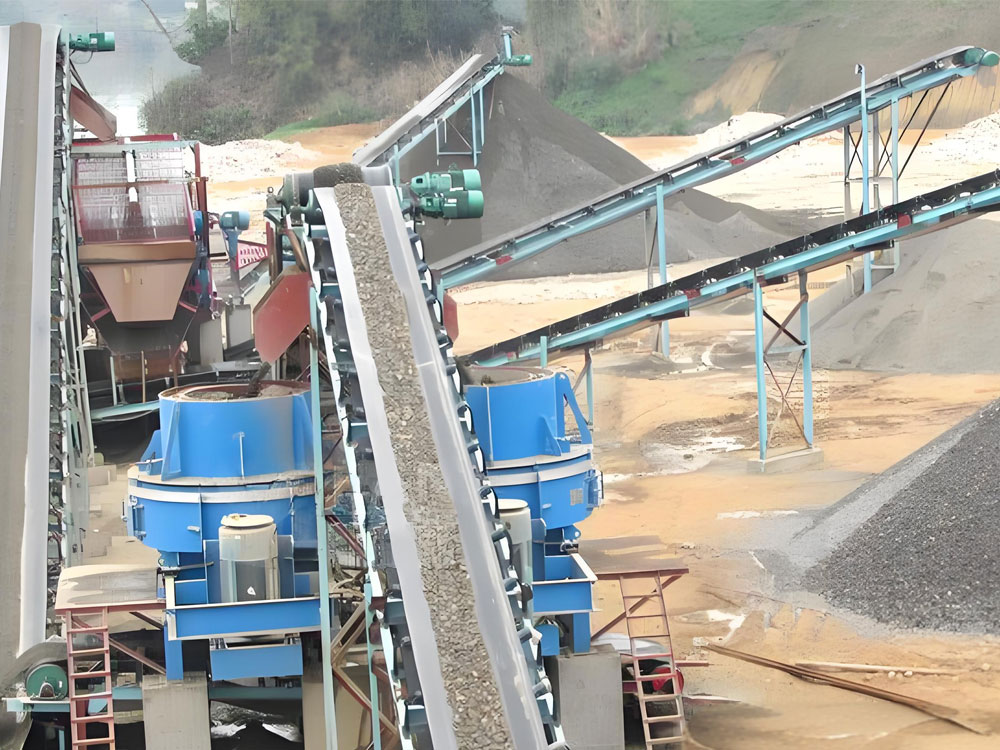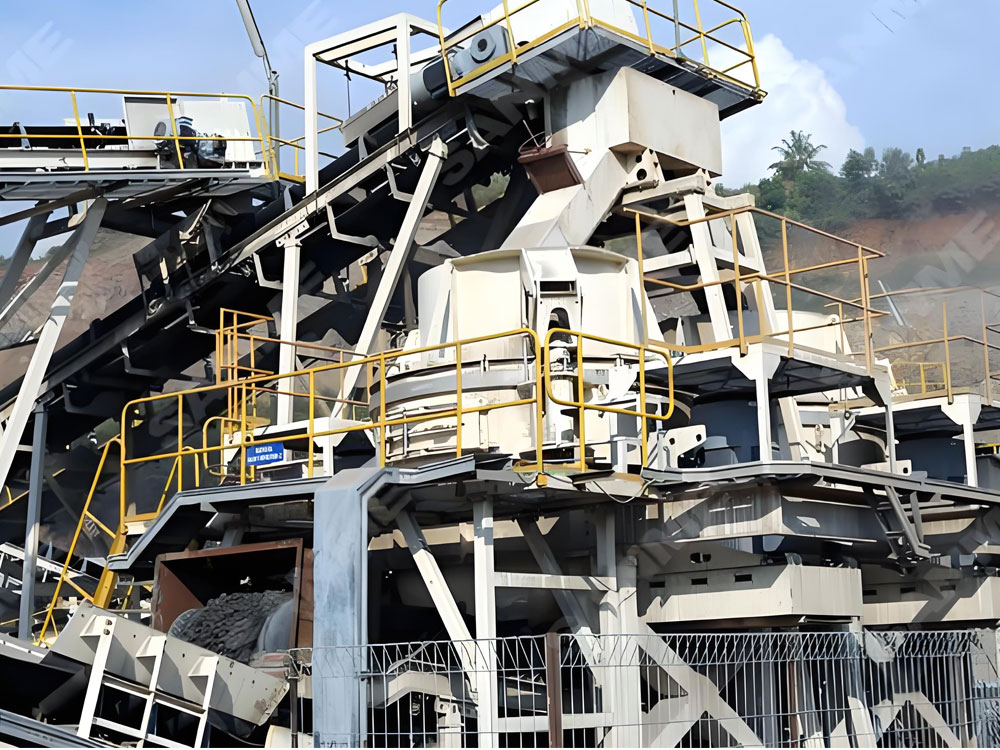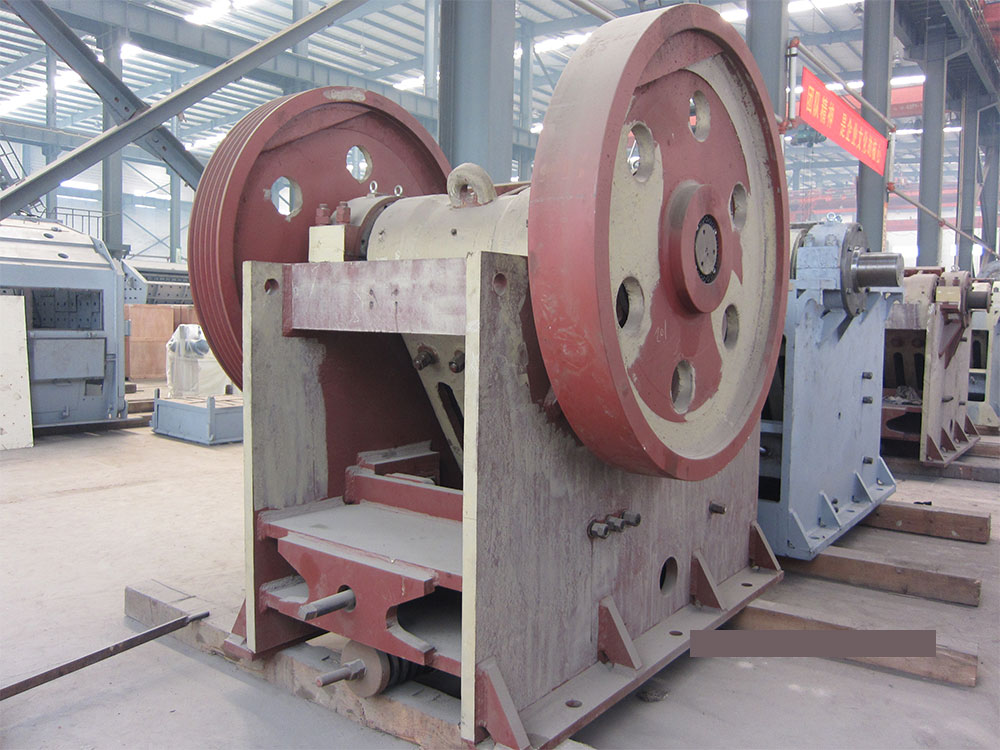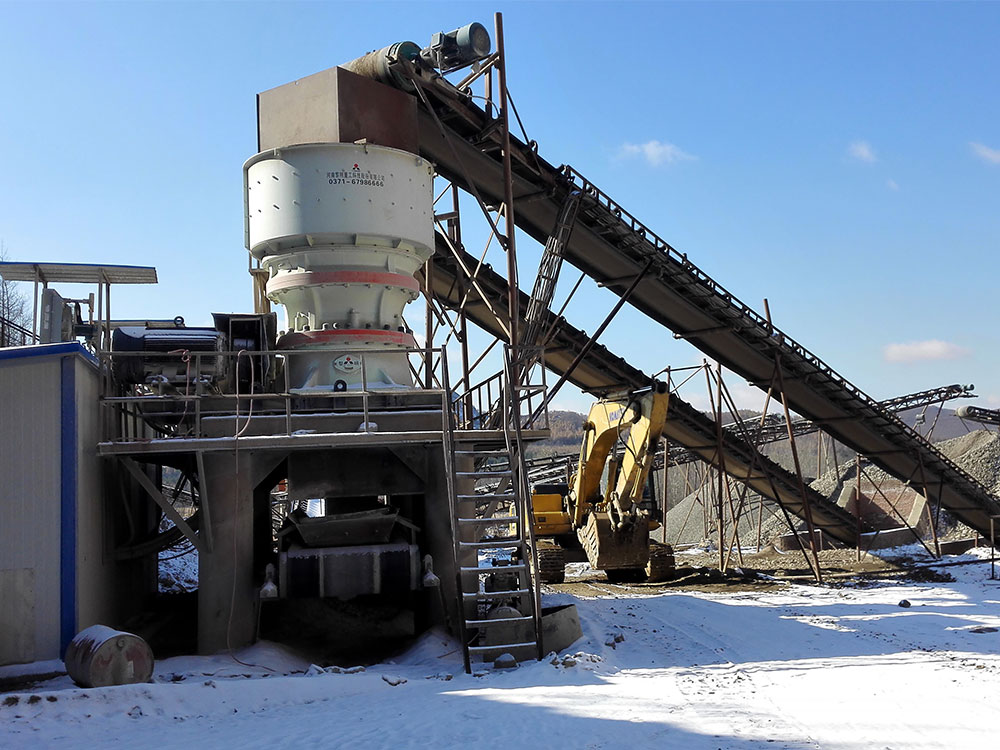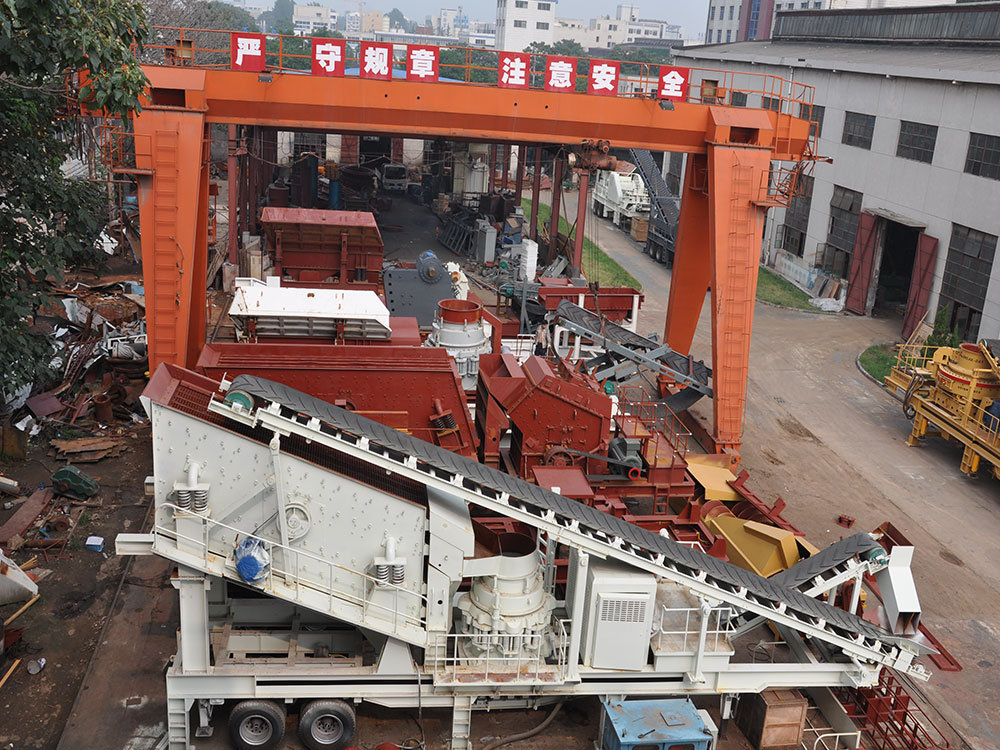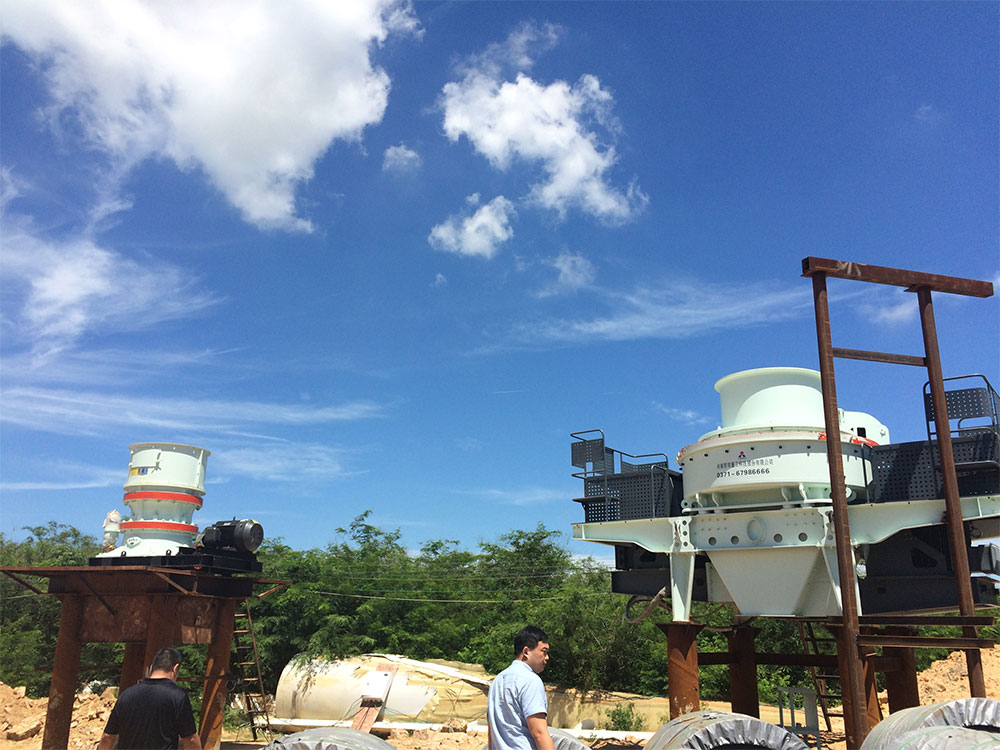In the field of sand and gravel aggregate production, the proper selection of crushing equipment and processes is crucial for producing high-quality, specification-compliant sand and gravel products. The following details the crushing equipment and associated processes required for each stage of a sand and gravel aggregate production line.
I. Primary Crushing Stage
Jaw Crusher
The jaw crusher serves as the core equipment in the primary crushing stage, primarily responsible for the initial breaking of large raw material chunks. It possesses formidable crushing capacity, capable of processing raw materials with a maximum size of ≤1200mm. This equipment is economical and durable, with a production capacity reaching 1000t/h, playing a pivotal role in numerous sand and gravel aggregate production projects.
Take a large-scale sand and gravel plant as an example. This facility processes substantial quantities of boulders mined daily, with raw material sizes reaching approximately 1100mm. By introducing the PE series jaw crusher, integrated with a vibrating feeder, the plant achieves efficient and stable coarse crushing operations. The vibrating feeder uniformly feeds raw materials into the jaw crusher. Leveraging its unique moving and fixed jaw structure, the jaw crusher crushes materials through compression, reducing large blocks into smaller particles suitable for subsequent medium and fine crushing stages.
A typical configuration pairs the PE series jaw crusher with a vibrating feeder. After years of development and refinement, the PE series jaw crusher boasts mature technology and stable performance. Its simple structure facilitates operation and maintenance, reducing equipment failure rates and repair costs. The vibrating feeder precisely controls feed volume, ensuring the jaw crusher consistently operates at optimal conditions and enhancing production efficiency.
II. Medium and Fine Crushing Stage
Cone Crusher
Cone crushers excel in the medium and fine crushing stage, particularly suited for processing high-hardness materials like basalt. Basalt, an extremely hard volcanic rock, finds extensive applications in road construction, railway engineering, and other fields. Employing the layer compression crushing principle, cone crushers subject materials to multiple squeezing and crushing actions within the crushing chamber, producing uniform output with a rational particle size distribution.
For instance, at a sand and gravel aggregate production base for a highway construction project, large quantities of basalt required crushing to produce compliant crushed stone. The base selected advanced hydraulic cone crushers, which feature extended maintenance cycles, reducing equipment downtime for servicing. These crushers boast high automation, automatically adjusting the discharge opening based on material hardness and particle size to ensure consistent product quality. Compared to traditional spring cone crushers, hydraulic cone crushers achieve approximately 20% higher crushing efficiency when processing high-hardness materials while reducing equipment failure rates by 30%.
Impact Crusher
Impact crushers are suitable for processing medium-hardness materials such as limestone and shale. Their unique crushing principle produces cubical particles with minimal fines and regular shapes, meeting the aggregate particle shape requirements of many engineering projects.
Take a construction sand and gravel production project as an example, where limestone is the primary raw material. By introducing impact crushers, the produced aggregates exhibit excellent particle shape. This allows them to better bond with cementitious materials like cement during concrete mixing, enhancing concrete strength and durability. The impact crusher's blow bars perform high-speed rotational impact crushing. Materials undergo multiple collisions with both the blow bars and impact plates within the crushing chamber, resulting in superior particle shape. Actual production data indicates that aggregates processed by impact crushers achieve over 85% cubic content while maintaining fine powder levels below 5%, significantly boosting the product's market competitiveness.
III. Shaping and Sand-Making Stage
Vertical Shaft Impact Crusher
The vertical shaft impact crusher plays a vital role in producing 05 crushed stone, enabling precise particle size control with adjustable fineness modulus. 05 crushed stone refers to aggregate with particle sizes ranging from 0 to 5 mm, widely used in concrete mixing, asphalt pavement laying, and other applications.
For instance, at a large concrete batching plant, producing high-quality concrete demands stringent quality standards for 05 crushed stone. This plant selected a vertical shaft impact crusher for sand production. The crusher propels materials via a high-speed rotating impeller, causing collisions and friction with the surrounding liner and material layer to achieve crushing and shaping. By adjusting equipment parameters such as rotor speed and feed rate, the output particle size and fineness modulus can be precisely controlled. In actual production, the 05 crushed stone produced by this plant exhibits uniform particle size with a stable fineness modulus between 2.6 and 3.0, fully meeting concrete production requirements while enhancing concrete workability and quality.
Hammer Crusher
The hammer crusher features a high crushing ratio, enabling single-pass processing and suitability for soft rocks like coal gangue and gypsum. Its operating principle involves high-speed rotating hammers impacting the material. Within the crushing chamber, the material undergoes multiple hammer strikes, rapidly reducing it to the desired particle size.
Taking a coal gangue comprehensive utilization project as an example, the project required crushing coal gangue into particles of a specific size for producing building materials. The selection of a hammer crusher significantly increased production efficiency. Compared to traditional multi-stage crushing processes, the hammer crusher achieves single-pass crushing, reducing equipment investment and footprint while lowering energy consumption. Actual calculations indicate that using a hammer crusher for coal gangue processing reduces energy consumption per unit product by approximately 40% and increases production efficiency by over 30%.
IV. Auxiliary Equipment
Vibrating Screen
Vibrating screens are indispensable auxiliary equipment in sand and gravel aggregate production lines, primarily serving to classify crushed materials into different specifications of crushed stone. Vibrating screens utilize the excitation force generated by vibrating motors to induce projectile motion of materials on the screen surface, thereby achieving material classification.
For instance, a large-scale sand and gravel aggregate production base is equipped with multiple large vibrating screens. These machines feature large screening areas and high processing capacities, allowing for quick replacement of different-sized screens based on production needs. Through the vibrating screen, crushed materials are precisely graded into various sizes such as 0-5mm, 5-10mm, 10-20mm, and 20-31.5mm, meeting the aggregate specifications required for different engineering projects. According to actual production statistics, the screening efficiency of these vibrating screens at the base exceeds 90%, effectively enhancing product quality and market adaptability.
Mobile Crushing Station
Mobile crushing stations offer high flexibility, making them particularly suitable for construction waste recycling scenarios. With accelerating urbanization, the volume of construction waste generated continues to rise, making its effective processing and utilization a critical issue. Mobile crushing stations can crush construction waste on-site into recycled aggregates for use in road subbases, recycled bricks, and other applications, achieving resource utilization of construction waste.
Take an old city renovation project in a certain city as an example. After demolishing a large number of old buildings, a significant amount of construction waste was generated. By introducing a mobile crushing station, the construction waste was directly crushed and processed at the construction site. These stations integrate feeding, crushing, and screening equipment, enabling rapid relocation and setup without transporting waste to fixed crushing sites—significantly reducing transportation costs. The recycled aggregates produced maintain consistent quality and meet relevant standards. Calculations show that using mobile crushing stations for this project not only minimized environmental pollution but also saved approximately 30% in construction material costs, delivering substantial economic and environmental benefits.
The crushing equipment and processes at each stage of the sand and gravel aggregate production line work in tandem to complete the production process from large raw materials to qualified sand and gravel aggregates. The rational selection and configuration of these equipment and processes are crucial for enhancing production efficiency, ensuring product quality, and reducing costs.


